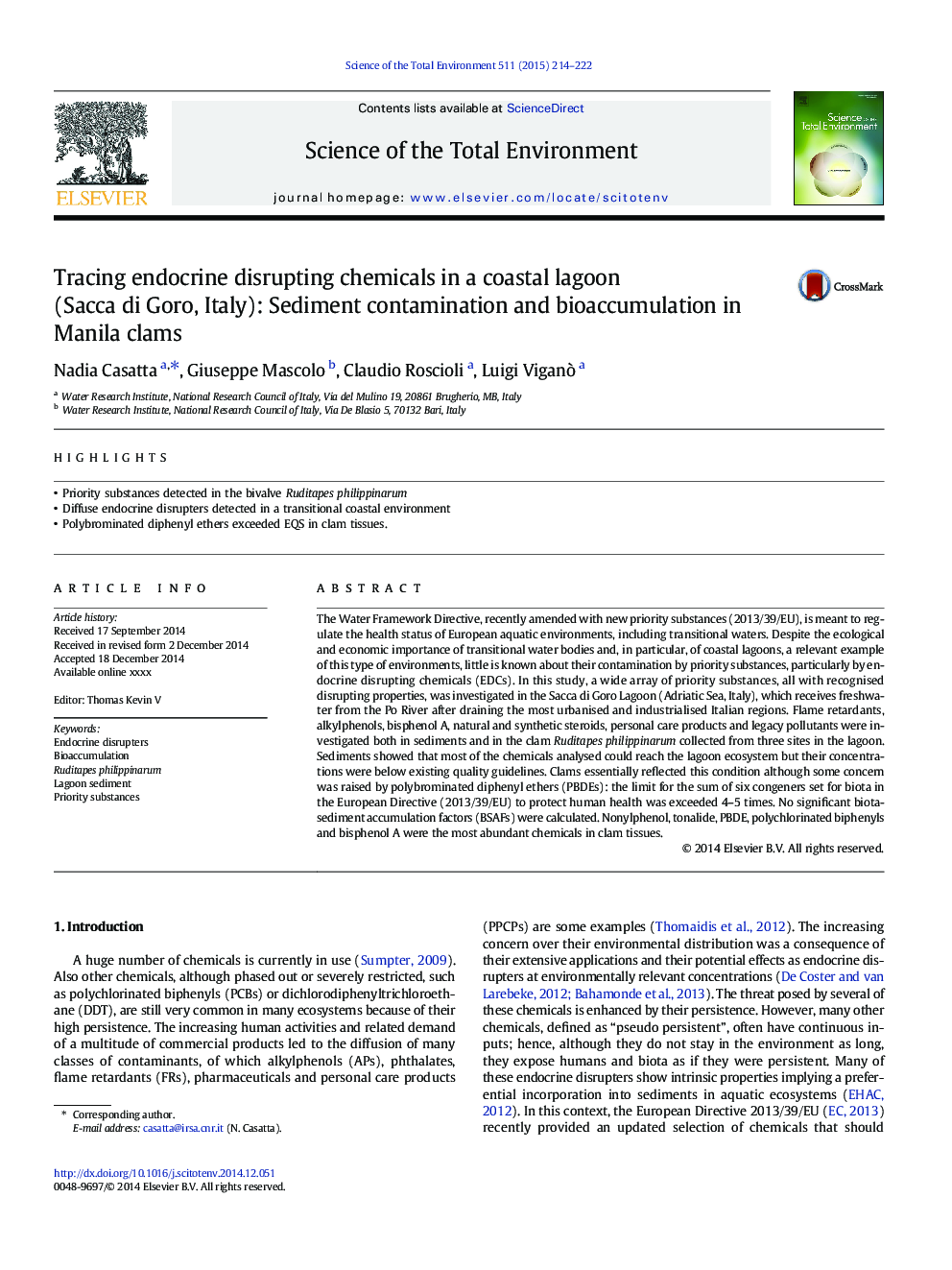| کد مقاله | کد نشریه | سال انتشار | مقاله انگلیسی | نسخه تمام متن |
|---|---|---|---|---|
| 6327439 | 1619766 | 2015 | 9 صفحه PDF | دانلود رایگان |
عنوان انگلیسی مقاله ISI
Tracing endocrine disrupting chemicals in a coastal lagoon (Sacca di Goro, Italy): Sediment contamination and bioaccumulation in Manila clams
دانلود مقاله + سفارش ترجمه
دانلود مقاله ISI انگلیسی
رایگان برای ایرانیان
کلمات کلیدی
موضوعات مرتبط
علوم زیستی و بیوفناوری
علوم محیط زیست
شیمی زیست محیطی
پیش نمایش صفحه اول مقاله

چکیده انگلیسی
The Water Framework Directive, recently amended with new priority substances (2013/39/EU), is meant to regulate the health status of European aquatic environments, including transitional waters. Despite the ecological and economic importance of transitional water bodies and, in particular, of coastal lagoons, a relevant example of this type of environments, little is known about their contamination by priority substances, particularly by endocrine disrupting chemicals (EDCs). In this study, a wide array of priority substances, all with recognised disrupting properties, was investigated in the Sacca di Goro Lagoon (Adriatic Sea, Italy), which receives freshwater from the Po River after draining the most urbanised and industrialised Italian regions. Flame retardants, alkylphenols, bisphenol A, natural and synthetic steroids, personal care products and legacy pollutants were investigated both in sediments and in the clam Ruditapes philippinarum collected from three sites in the lagoon. Sediments showed that most of the chemicals analysed could reach the lagoon ecosystem but their concentrations were below existing quality guidelines. Clams essentially reflected this condition although some concern was raised by polybrominated diphenyl ethers (PBDEs): the limit for the sum of six congeners set for biota in the European Directive (2013/39/EU) to protect human health was exceeded 4-5 times. No significant biota-sediment accumulation factors (BSAFs) were calculated. Nonylphenol, tonalide, PBDE, polychlorinated biphenyls and bisphenol A were the most abundant chemicals in clam tissues.
ناشر
Database: Elsevier - ScienceDirect (ساینس دایرکت)
Journal: Science of The Total Environment - Volume 511, 1 April 2015, Pages 214-222
Journal: Science of The Total Environment - Volume 511, 1 April 2015, Pages 214-222
نویسندگان
Nadia Casatta, Giuseppe Mascolo, Claudio Roscioli, Luigi Viganò,